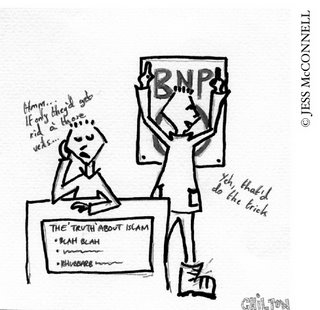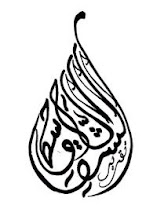Antonia House
The extent and intensity of the attacks and destruction inflicted on Lebanon this summer captivated the world’s attention and dominated international headlines. The month-long conflict understandably overshadowed any other news in the region. But today, more than two months after the ceasefire, an equally brutal conflict continues, only a few hundred kilometers away. News from Gaza, which had made the headlines for two weeks, disappeared when the war in Lebanon broke out, and still no one is talking about it.
The conflict in Gaza is sometimes presented as if it started on 25 June, when a group of Palestinian militants captured an Israeli soldier. The reality is quite different. It is useful to look back at least to September 2oo5 when Israel unilaterally withdrew from the Gaza Strip. The withdrawal was heralded by the international community as a “courageous decision”
1 and a “real contribution towards peace”
2, on the part of the Israeli government, and Israel’s then-Prime Minister, Ariel Sharon. However, the withdrawal was openly and avowedly part of a strategy both to strengthen Israel’s control of the West Bank, and to create ‘facts on the ground’ - facts which would then influence any final status negotiations - by moving all the Gaza settlements and settlers to Palestinian territory in the West Bank.
Indeed, even ignoring the increased settlement (read, colonization) of the West Bank, the withdrawal from Gaza was far from a courageous contribution towards peace. Retaining direct control of the Gaza Strip through occupation and settlements was economically, militarily and demographically disadvantageous for Israel. Furthermore, whilst handing over nominal authority to the Palestinians, Israel continued to control the Gazan borders, and therefore effectively maintained complete control of Gaza’s economy. The right to import and export, the right to work inside Israel (on which many Palestinian families depended for basic sustenance), and even the right of fishermen to fish in the Mediterranean Sea, are under the direct control of the Israeli military, and these rights were often denied. Since the end of June, they have been denied completely. What

is more, Gazans have been totally cut off from the rest of Palestine, from the West Bank. They are consistently denied permission to visit their relatives, seek medical treatment, or study in the universities there. With frequent closures of the borders, many would argue that rather than becoming an independent territory, Gaza has not only sunk further into poverty, but it has also become the world’s biggest and most densely populated open-air prison.
It is unsurprising then, that the launching of Qassam missiles by Palestinians into Israeli territory did not cease with the withdrawal. Between September 2oo5 and June 2oo6, approximately 1,ooo missiles were launched into Israel, bringing up the number of people killed by Qassams in the past five years to 8. Israeli reprisals during that period consisted of between 7,ooo to 9,ooo heavy artillery missiles launched into Gaza, killing 8o people in the first six months of 2oo6 alone. In addition, during the Beit Hanoun raid between 1 and 6 November, 55 people were killed and 15o injured.
On 25 June, a group of armed Palestinians crossed the border through a tunnel they had dug. They raided a military outpost, killing 2 Israeli soldiers and capturing Corporal Gilad Shalit. The captors’ demands for his release was the release of all Palestinian female prisoners and Palestinian prisoners under the age of 18 held in Israeli jails. Currently, there are 9,ooo Palestinian prisoners in Israeli jails, 1,ooo of whom are administrative detainees, and have had no charges brought against them.
On 28 June, the Israeli forces entered southern Gaza, ostensibly to search for the captured soldier. However, several civilian areas were targeted during these early hours of the invasion. Bridges were bombed, effectively cutting off Northern and Southern Gaza, and Gaza’s only power station was hit with at least 8 missiles, cutting off electricity to two-thirds of Gaza’s 1.4 million inhabitants. That evening, the army entered Northern Gaza, targeting Qassam rocket locations. The next day, 29 June, the Islamic University in Gaza City was destroyed, and thousands of leaflets were dropped telling civilians to leave their homes. But with the bridges bombed and Egypt having sealed off the Southern border with 2,5oo soldiers, it was unclear where the residents were meant to go.
On 3o June, targeted bombardments began, mostly hitting government buildings, but on 12 July, hitting a residential building and killing a family of 9. Despite all this, Qassam rockets continued to be launched, causing light damage and wounding 8 civilians in Southern Israel. Consequently, in early July, the Israeli Defence Forces (IDF) reoccupied Northern Gaza, to push those who launched the missiles out of range of Israeli towns. It was a ground operation backed by Israeli Air Force jets and artillery fire, and followed by helicopter gun-ships and tanks. Palestinian combatants responded with automatic weapons.
And the attacks have continued for the past four months. In September, the United Nations Development Programme (UNDP) reported that between 28 June and 27 August 2oo6, Gaza had sustained 46 million USD worth of damages, not including the cost of repairs. Over 5o% of this destruction, 23.5 million USD worth, was suffered by the agriculture industry. The crops which constitute the basis of Gaza’s economy have been destroyed. And it does not include the 18o million USD damage to the electric grid.
Gideon Levy reported in the Israeli daily Haaretz, “More than half the electricity supply will be cut off for at least another year. There's hardly any water. Since there is no electricity, supplying homes with water is nearly impossible. Gaza is filthier and smellier than ever… [It] is also poorer and hungrier than ever before.”
3 The lack of electricity means food in the refrigerator has long since spoiled. It means no lights, no television, radios or mobile phones, no contact with the outside world. It means hospitals treating hundreds of people can no longer function, and it means no clean water: in Gaza, water is pumped and purified with electricity. One million people in Gaza are now living without regular access to drinking water. And unlike Lebanon, where Hezbollah compensates war victims who have lost their homes, there is no one in Gaza to pick up the bill.
The situation is only exacerbated by the international embargo imposed on the Hamas government, which has caused the tens of thousands of civil servants (belonging to all political parties) to be largely deprived of their salaries since early 2oo6 (they represent the majority of the mere 33% of Gazans who are employed). This has led to a public employee strike, which has in turn reduced public services to a bare minimum. Approximately two-thirds of Gaza’s 1.4 million population are now living below the poverty line of 2 USD per day.
Moreover, Gaza’s borders are almost permanently closed, making it even more like a prison. People can neither leave nor enter, though tens thousands have tried, some waiting months on end. Because some were ill or wounded, they did not survive the wait. In late August, the Rafah crossing was opened for two days. Some got through, some didn’t.
“There are signs of desperation everywhere,” Patrick Cockburn writes. “Crime is increasing. People do anything to feed their families.”
4 When the Israeli army entered Gaza to search for tunnels, they kicked out the Palestinian police. And when they left, it was not the police who took their place, but looters. With the extra violence due to internal political tensions between the rival factions Fatah and Hamas, the level of anarchy is comparable to Iraq.
Since 25 June, approximately 3oo Palestinians (of which around 25% are women and children) have been killed in Gaza by the occupation forces. Well over 1,ooo have been injured, most of whom are civilians, a third of them children. In August alone, 76 people were killed; more than half of them were noncombatants. In October, over 3o people were killed. And, although it is not easily quantifiable, the psychological damage inflicted on the entire population by four months of indiscriminate “killing and demolishing, bombing and shelling” undoubtedly dwarfs any physical and material losses. Levy cites a Spanish journalist, “a veteran of war and disaster zones around the world,” who, having spent the summer in Gaza, “said he had never been exposed to scenes as horrific as the ones he saw and documented over the last two months.”
5 It is difficult to see how the Qassam rockets could possibly justify such massive destruction. And still Corporal Shalit has not been released.
Indeed, as Levy presciently concludes, “Gilad Shalit will not be released and the Qassams will not cease. On the contrary, there is a horror taking place in Gaza, and while it might prevent a few terror attacks in the short run, it is bound to give birth to much more murderous terror.”
6Footnotes
- Kofi Annan, 18 August 2oo5, UN News Centre, “Annan Commends Israeli Withdrawal from Gaza”.
- George W. Bush, 14 April 2oo4, Palestinian Centre for Human Rights, “Disengagement Factsheet No. 2”, http://www.pchrgaza.org.
- Gideon Levy, “Gaza’s Darkness”, http://www.haaretz.com/hasen/spages/757768.html.
- Patrick Cockburn, “Gaza is a jail. Nobody is allowed to leave. We are all starving now,” The Independent, 8 September 2oo6.
- Gideon Levy, “Gaza’s Darkness”, http://www.haaretz.com/hasen/spages/757768.html.
- Ibid.
ANTONIA HOUSE studies Arabic and Human Geography at the University of Edinburgh, and currently attends Birzeit University in Palestine. She lives in Ramallah.







